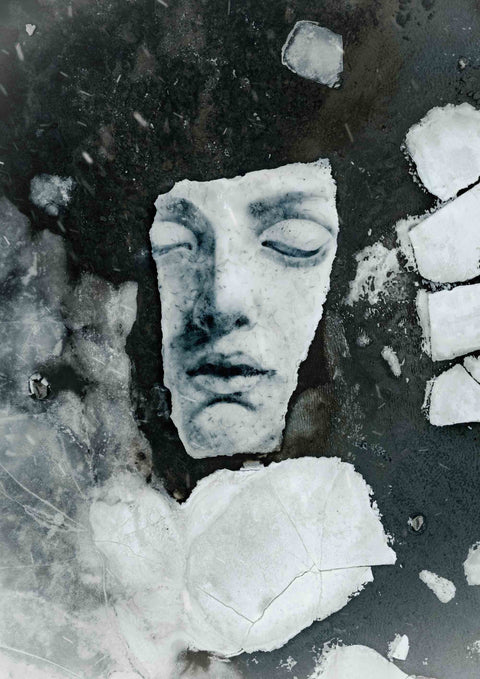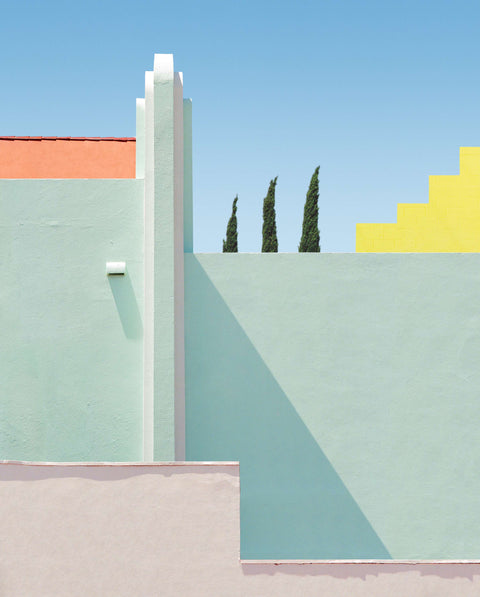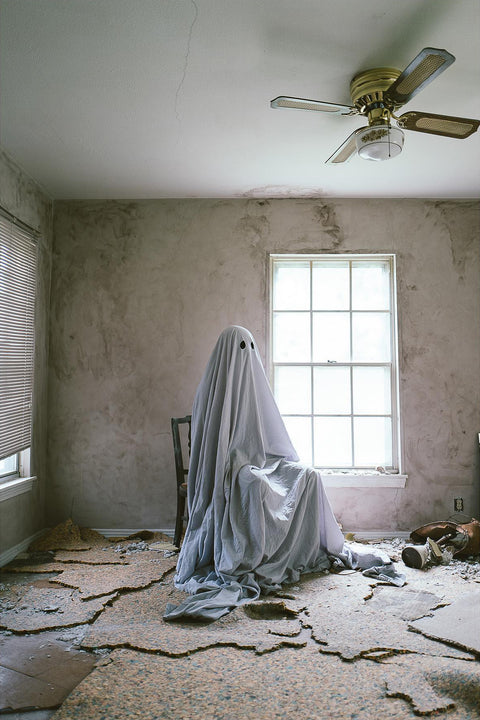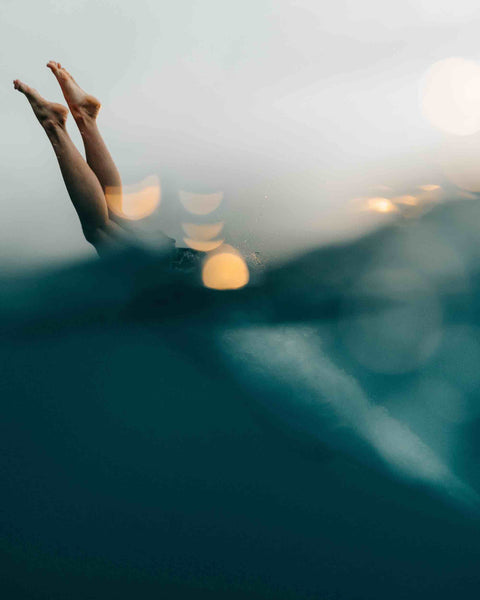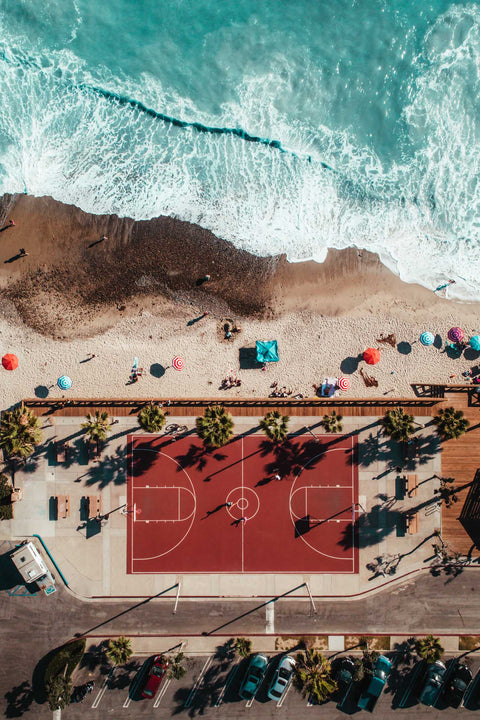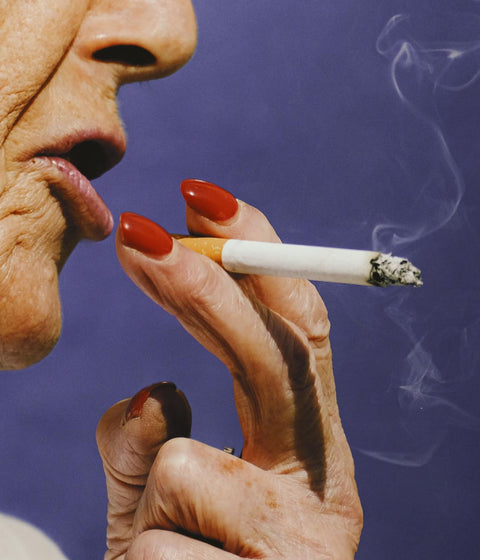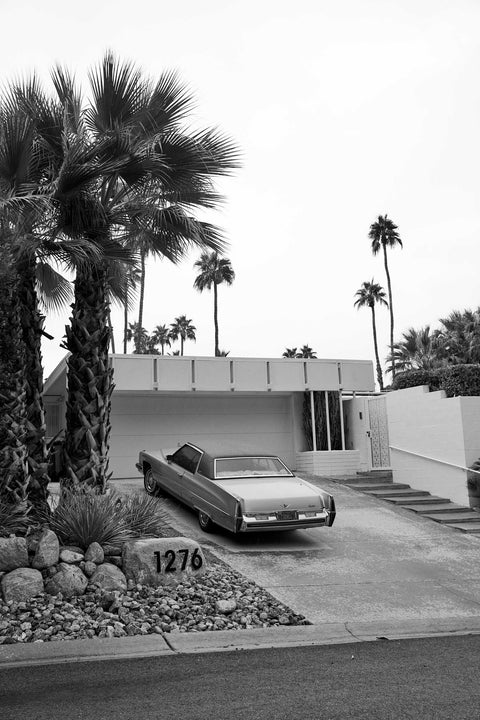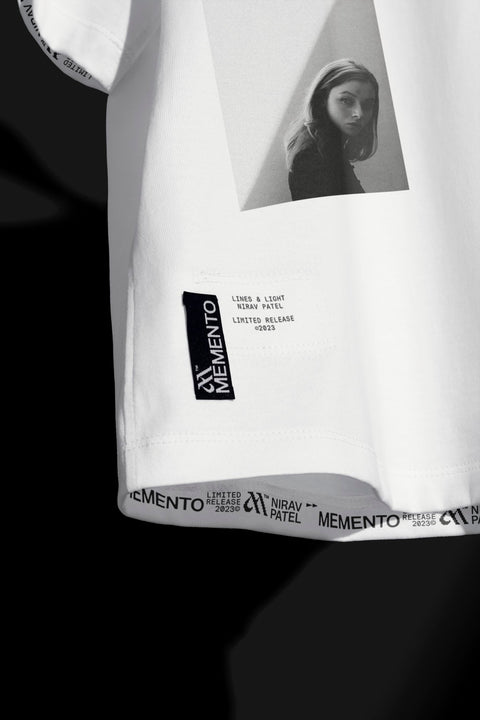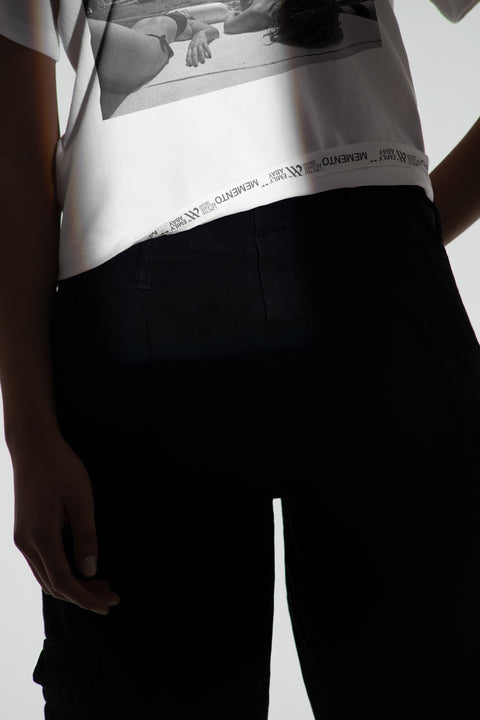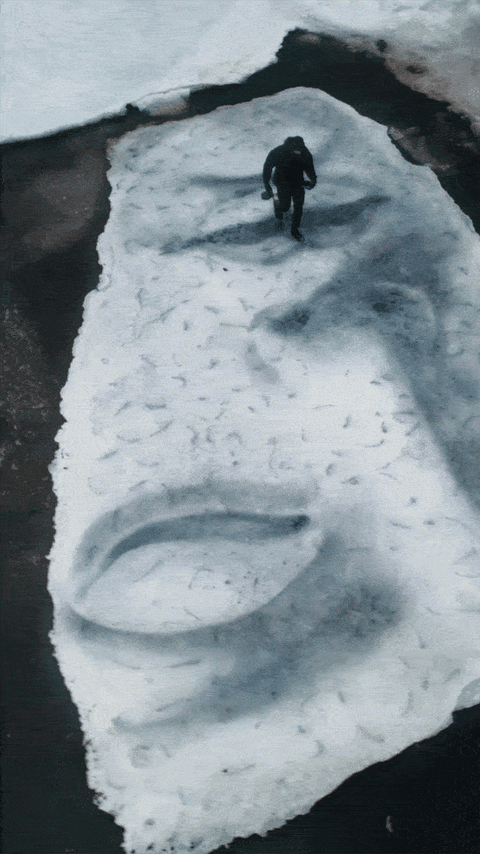
David Popa
Coming off the ice, David took a moment to share more about his background as artist ahead of the Impermanence release. We covered David's early motivations as an artist all the way to the process behind creating gallery apparel from Scandinavian sea kelp sourced from the same waters he creates his works. All to create a new offline medium of art & photography.

To start, could you share a bit about yourself and speak to how your career in the photographic arts began?
I grew up in NYC in an artist household, which was an incredible privilege. My father taught my siblings and me how to paint and draw at an early age, and nearly every weekend, we would escape the hectic city life into nature. It was the freedom and expansiveness of nature that gripped me at a young age. As I grew older and pursued the path of an artist, I realized the confines of the studio to be restrictive, and so my work evolved into large-scale "street art" murals. After falling in love and moving to Finland, all the memories and explorations I had as a child in nature started finding their outlet in the beauty of Finnish nature. I began to use natural ephemeral materials such as chalk and charcoal to create large-scale earth frescoes directly on the rocks and landscape of the archipelago. Naturally, the desire to document these pieces became a crucial aspect, and the photography of these works began to take as much importance as their creation.

“As I grew older and pursued the path of an artist, I realized the confines of the studio to be restrictive, and so my work evolved into large-scale "street art" murals.”
Your work has been described as "beckoning the viewer to consider the nature of our brief existence and relish in its profound mysteries and everyday miracles" - can you share more about this philosophy and how it drives your work?
Initially, when I began this work, I hadn’t considered the effects of using an ephemeral medium. I thought that naturally I should be using materials that leave no trace, but surprisingly; through the process of creation and witnessing my work erode, crack, and disappear before my eyes, it caused me to think deeper on the impermanence of our everyday lives. Every moment is truly miraculous. Being out in these beautiful, ethereal landscapes heightens my sense of what a mysterious world we live in..

“Witnessing my work erode, crack, and disappear before my eyes causes me to think deeper on the impermanence of our everyday lives. Every moment is truly miraculous. Being out in these beautiful, ethereal landscapes heightens my sense of what a mysterious world we live in."
Building from your broader motivations, what goes into the inspiration & process for a particular work? Can you share a bit about the process that went into Impermanence and the work we did to bring it to life through this collaboration?

As a young boy, I would go to the MET Museum with my father and draw from the sculptures in the sculpture garden. Often it was the fractured sculptures that caught my eye, and I could imagine walking along the shore and stumbling on a remnant of the past. The ice floes on the Baltic Sea in Finland echo the same marble, fractured sculptures I used to draw from with my father. Most artists desire to immortalize their work. The reality is that even the greatest civilizations return back to the earth. I find playing with these themes to be very intriguing, and working in such an impermanent manner very freeing. It was very exciting to make such an ephemeral work of art come to life through this collaboration, especially since most of my work is witnessed only as a final video or photograph online. The fact that, for example, the Raglan Sweater is partly made of Seacell fabric from the seaweed of Scandinavian waters, the same waters I make my work in, could not have been more perfect.
“It was very exciting to make such an ephemeral work of art come to life through this collaboration, especially since most of my work is witnessed only as a final video or photograph online.”
On a tactical level, how do you create the earth-based pigments and dyes for each piece? How much is required to create a work?
For smaller works in nature, I make my own charcoal pigment, which is a rather simple process of taking coconut shells or branches in a tin with small holes and letting it sit in the fire for an hour or two. The result is charcoal that I can then grind down rather easily with my mortar and pestle to make black pigment. For my larger work, I source my pigment from different quarries. The beauty is the simplicity of materials: just earth pigment, charcoal, chalk mixed with the source water.
What artists have impacted your work the most significantly? For artists who are inspired by your work, what advice would you give them?

I would say the result of my work is a fusion of all my various loves.
Influences include: Drawings and late sculpture work of Michelangelo, Sculptures of Rodin, all-around influence of My father, words and spirit of Van Gogh, earthworks of Andy Goldsworthy, large-scale murals of Australian Artist Guido Van Helten, Cinematographer Emmanuel Lubeski, Photographer Benjamin Hardman, YouTube Filmmaker Gawx, Composer Hans Zimmer.
For artists who like my work, I would say thanks! But be careful. There were many artists I emulated growing up, and that led me to conform to THEIR world, not my own. Each individual has a world that wants to come out that is built by each of our own individual life experiences and natural loves. These influences are often much broader than just other artists and should span to literally every area in life. I would recommend doing a brain dump of all your loves and start experimenting to merge them into one “genre” that's your own. Don’t be concerned with being wholly “original”; be a DJ and make what truly makes you happy.
“For artists who like my work, I would say thanks! But be careful. There were many artists I emulated growing up, and that led me to conform to THEIR world, not my own.”
Why do you think fashion can be a powerful medium for photography, and how has Memento influenced that opinion?
“To take the beauty and life of art and fuse it with everyday wear is just brilliant and an incredible way to bring art into our everyday lives.”

Fashion is the most accessible form of self-expression for many. To take the beauty and life of art and fuse it with everyday wear is just brilliant and an incredible way to bring art into our everyday lives. Couple that with just how beautiful every detail of Memento’s gallery wear is, and you have something incredible.
At its core, your work is so real and ephemeral. When getting your work out into the world, how do you think about the balance between offline and online mediums? Whether it be prints, Memento, or other mediums? What do you think this balance will look like 50 years from now?
“Instead of that happening only in the confines of one's home, through Memento, it can take place anywhere and offers a lower barrier to entry for individuals that feel intimidated by collecting art.”

This is a really good question. At the inception of starting to make work in nature, I immediately complemented the work with limited edition prints. It just felt right, and so many collectors share just how different and beautiful having the work in physical form is vs merely viewing it on your tiny smartphone screen. I take so much pride in the extensive post-processing of images to get them to their highest resolution and look stunning in print form.
Much of art collecting is an expression of the collector's taste, lives, and great art sparks conversation. We want people to walk into our homes and ask about the work displayed. Instead of that happening only in the confines of one's home, through Memento, it can take place anywhere and offers a lower barrier to entry for individuals that feel intimidated by “collecting art”. In 50 years, who knows what the world will be like, however, I do know that more and more individuals are craving real experiences and a physical, tangible form of the art they love.

DAVID POPA | IMPERMANENCE

